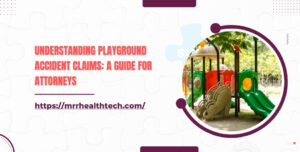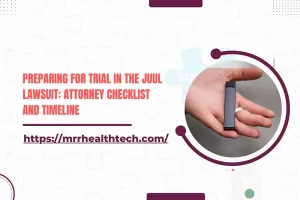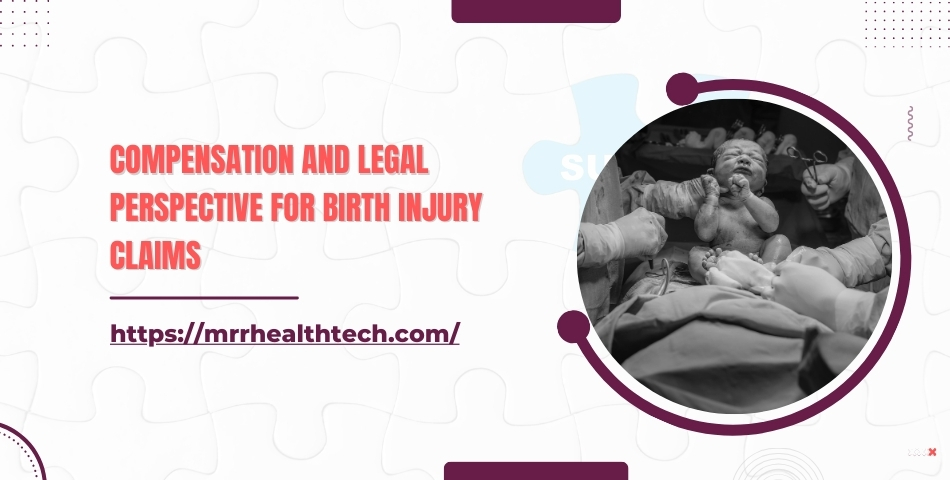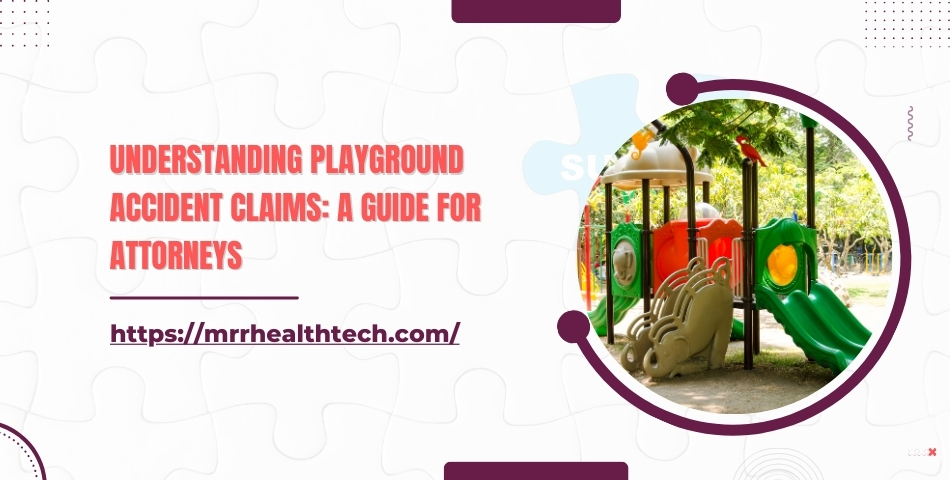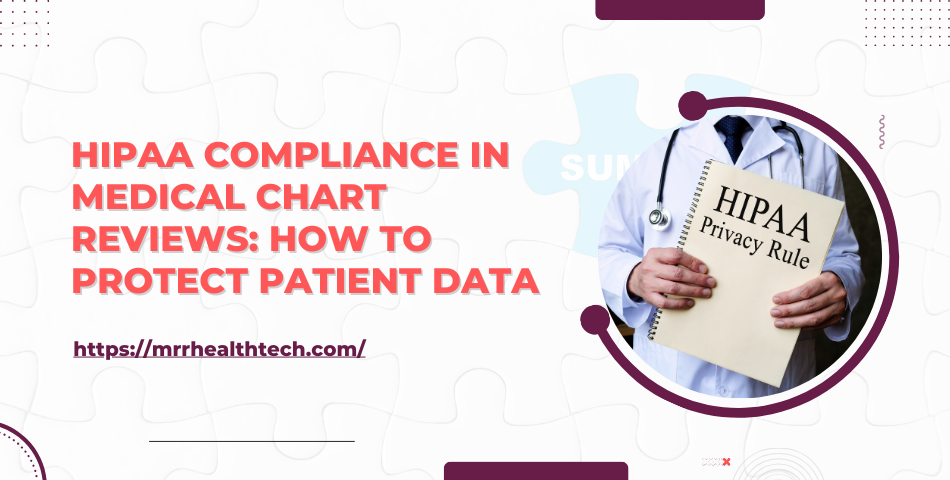
Introduction
Health care’s silent heroes are medical chart reviews. They are not just page-flips but rather a means of extracting useful insights that can revolutionize patient care and advance clinical research.
Why Chart Reviews Matter:
- Guarantee precision in medical records
- Assess the quality of care given
- Confirm adherence to treatment protocols
But there is a catch, we are dealing with sensitive information. Introducing, HIPAA, the protector of patients’ privacy.
Understanding HIPAA Compliance
HIPAA law is essential for safeguarding patient privacy and data security in healthcare industry. It has two major rules known as the HIPAA Privacy Rule and HIPAA Security Rule which ensure that patients’ information remains confidential all through chart reviews.
Balancing Act: Insight vs. Privacy We’re simply not going through the motions when we follow HIPAA guidelines for example:
- Keeping your private information secure
- Fostering faith in healthcare practices
- Improving overall standards of medical care
The HIPAA Privacy Rule
The Privacy Rule stipulates criteria for securing Protected Health Information (PHI), which includes sensitive details such as client names, addresses, social security numbers, and medical records.
The HIPAA Security Rule
On the contrary, Security Rule stresses on Electronic Protected Health Information (e-PHI) alone. It necessitates health care organizations to have measures put in place so that patient’s digital information is secure and maintained in its original state.
Ensuring HIPAA Compliance in Chart Reviews
However, when doing chart reviews ensuring HIPAA compliance can become complicated especially if third party companies like medical records outsourcing companies or medical chart review outsourcing companies are involved. Here, it is essential to ensure that all stakeholders handle Protected Health Information (PHI) safely and comply with every strict data protection regulation.
There are a few things that healthcare providers can do to minimize these risks:
- Check the HIPAA compliance policies and background of any other vendors you might be considering carefully.
- Make clear contracts: The parties should sign detailed business associate agreements in which they agree on their respective roles in protecting PHI.
- Carry out regular audits/trainings: From time to time, ascertain if everyone is sticking to the rules and provide continuous training for those involved in the process.
Get accurate medical records review services from us with no risk of data breach, we are a HIPAA Complaint!
Compliance with Privacy and Security Requirements
To access medical records, one needs to understand and adhere to privacy and security requirements that are highlighted in the HIPAA. There are two major rules in HIPAA: Privacy Rule for protecting the information of individuals’ health, and Security Rule which contains standards on how to protect electronic protected health information
Some important compliance requirements are:
- Implementing administrative, physical, and technical safeguards that safeguard e-PHI.
- Allowing only authorized personnel to access patient data.
- Conducting periodic risk analysis to uncover possible vulnerability.
By observing these stipulations, we also prevent legal liabilities and uphold confidence in healthcare service delivery as well.
The Role of Covered Entities and Business Associates
HIPAA compliance during chart reviews is mainly the responsibility of healthcare providers, health plans, and healthcare clearinghouses which are covered entities. For this reason, they must protect all forms of Protected Health Information (PHI) and make sure that any information shared complies with HIPAA.
Covered entities should establish Business Associate (BA) relationships when dealing with third parties such as medical records outsourcing companies. In this context, a Business Associate Agreement (BAA) is essential. The BAA sets forth the business associate’s responsibilities for safeguarding PHI such as:
- Applying proper safeguards.
- Disclosing breaches or unauthorized uses.
- Ensuring subcontractors are also in conformity with HIPAA requirement.
Therefore, appropriate BAAs ensures data privacy and security in external chart reviews is preserved.
The Impact of HIPAA Compliance on Risk Adjustment and Research
HIPAA compliant chart reviews are highly vital for medical chart review for risk adjustment and clinical research. One has to code risk adjustment accurately to be properly reimbursed and allocate resources properly. When conducting research, strictly adhere to the privacy and confidentiality standards due to ethical concerns.
There are several key factors involved in maintaining regulatory alignment:
- Authorization and Informed Consent: Getting approval from participants in research by providing them with adequate information beforehand.
- Institutional Review Boards (IRBs): Committees that oversee research studies involving human subjects to protect their rights and welfare.
- Privacy and Confidentiality: Ensuring that patient data is kept very safe throughout risk evaluation or research activities.
We can ensure ethical use of medical chart review data by including these elements.
Staying Updated on Evolving HIPAA Regulations
It is important that healthcare providers undergo training on how to comply with the Health Insurance Portability and Accountability Act (HIPAA). Constant training keeps employees informed about developments in HIPAA law, especially as pertains chart reviews and information management.
Key Points:
- Ongoing education gives employees a thorough understanding of healthcare data security.
- Wide-ranging compliance efforts promote patient confidence.
- Continuing education ensures chart review systems continue to work properly.
Current knowledge helps in the enforcement of HIPAA ensuring privacy protection and efficiency in operations.
FAQs (Frequently Asked Questions)
What is the significance of maintaining HIPAA compliance in chart reviews?
It’s very important to perform chart reviews in the healthcare industry to evaluate patient data and make informed decisions. But this shall only be done while ensuring that patients’ privacy is always protected. In line with this, maintaining HIPAA compliance during the process ensures that patient rights are respected.
What are the key components of HIPAA compliance that are relevant to chart reviews?
Notably, some of the major components of the compliance document include HIPAA law, Privacy Rule, Security Rule, Protected Health Information (PHI), Electronic Protected Health Information (e-PHI), and The National Provider Identifier (NPI). All these factors greatly influence how charts are reviewed to keep their content confidential.
What are the responsibilities of covered entities and their business associates in relation to HIPAA compliance during chart reviews?
HIPAA compliance is a responsibility shared by covered entities and their business associates when it comes to chart reviews. Consequently, adequate Business Associate Agreement (BAA) contracts must be put in place for comprehensive data protection as well as confidentiality purposes when engaging external entities in chart reviews.



